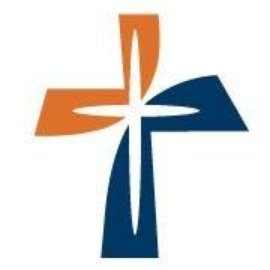This is according to Monique Dalli, Director of Learning and Growth at the Melbourne school, who says a calculated decision to split each head of learning areas (HOLAS) role into two has proven a real game changer for both staff and students.
This year Xavier expanded to cater for Year 7-12s, and Dalli says the change gave school leaders a “point of reflection” to consider how middle leadership positions could be reconfigured for the benefit of all.
The demands that come with a head of department position are huge, Dalli suggests.
“School demands have changed as well, and so the funnelling of work to one leader across a large staff group, across a large number of subjects, large number of classes, you start to have symptoms emerging like decision fatigue, or juggling too much or doing only what's required in the now and maybe not doing enough as much strategic work as what we would have liked.
“So, [people risk becoming focused on the] daily administration and the present mechanics of a school, and not enough on that strategic level, future-focused work,” she tells EducationHQ.
Already invested in a co-leadership model, leaders launched an investigation into what works in other sectors, namely in business and the IT realm.
Dalli says looking at broader leadership systems and structures in other contexts opened up “a lot of learnings” about how a split leadership role might function well in a school.
The change, implemented last year, has seen one educator put in charge of curriculum and assessment, and another head up pedagogy across each learning area.
Dalli says the clear delineation between the roles has significantly slashed the usual workload faced by middle leaders.
“So [splitting up the] what we teach, [and] the how we teach, provides staff a structure for funnelling (enquiries and tasks).
“[When there’s] large volumes of staff connecting to one leader over time, it divides that burden and that workload.
“So you’ve got these two co-heads who have clear tasks, clear projects in their remit, But also equally, there’s a shared vision and there’s areas where they work together,” Dalli explains.
While they might have separate areas of responsibility and specialisation, the HOLA pairs work in tandem, forming something of a formidable team, Dalli reports.
“They work together very closely. I would say ‘in sync’ is probably how I would describe it.
“I would also suggest that, because it’s co-leadership, ‘co’ means equal. So, they have an equal level of decision-making responsibility, equal level of leadership…”
“It also means that they have different strengths as a leader. And so, when you put those two co-leaders together, it becomes more like an interdisciplinary team,” she says.
Feedback to date is glowingly positive, Dalli adds, with students saying they have more points of staff contact and staff reporting less instances of decision fatigue with better support structures in place.
“We’ve also created good teams within teams, so curriculum and assessment HOLAS have a subgroup, pedagogy HOLAS have a subgroup.
“It’s taking away that siloed approach to leadership – and in middle level leadership, it’s really important because they’re a driving force in schools.
“So, anything that we can do to support middle leaders to function [better is critical],” Dalli adds.
Key to the move was running through every possible scenario that might pop up in the daily running of a school and deciding which fell under the remit of each HOLA, the educator recalls.
“We did have to go through and think about the daily mechanics of a school and think about, ‘well, who does a parent contact, which co-head is best for this?’
“So we almost role played and drew out daily examples of life in a school … and I think that kind of role playing and that discussion added life and gave it a very practical application in terms of those workshops and meetings, and it also gave relevance to people’s roles.”
Many other schools have shown interest in learning about Xavier’s ‘unique’ role change and are keen to hear how it’s playing out, Dalli says.
“I think that what it shows is schools should challenge the concepts of traditional leadership models, and be innovative, and responsive to their own school context.
“So, while people are interested in our model, it doesn’t mean that it will work for their school, but it might provide inspiration for them to think about what are the opportunities and what are the areas their school wants to grow in?”















